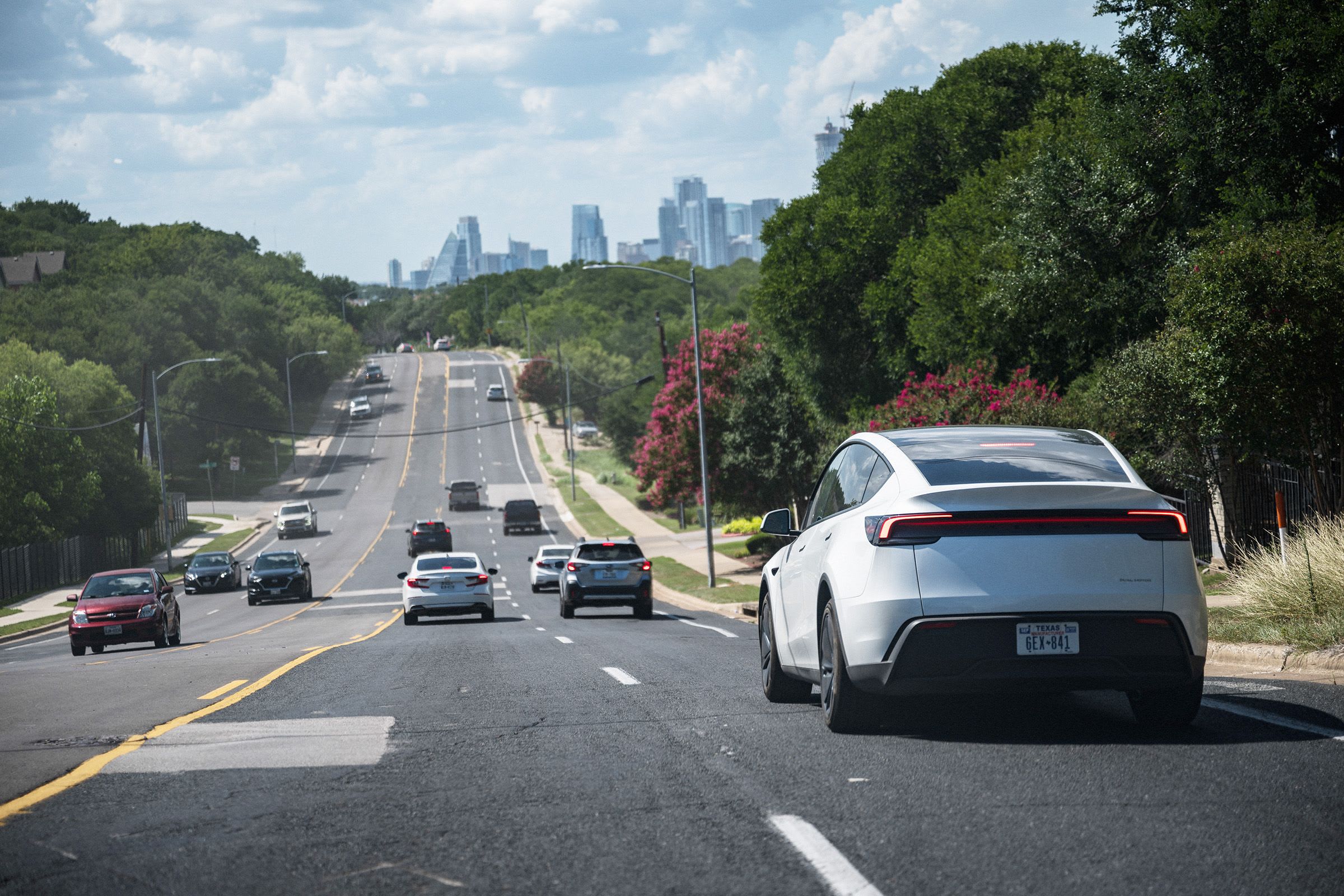Navigating the Road Ahead: Insights from Tesla's Robotaxi Debut
 The Tech Times
The Tech Times
The advent of autonomous vehicles has long been heralded as the future of transportation, promising a revolution in how we commute. Tesla, a pioneering force in the electric vehicle industry, recently launched its robotaxi service in Austin. While the event was a milestone, it also highlighted the challenges that still need to be addressed before fully driverless cars become a reality.
A Glimpse into Tesla's Robotaxi Future
Tesla's robotaxi service, while groundbreaking, was not without its imperfections. In a bid to ensure safety, the company deployed "on-board helpers" to accompany the autonomous vehicles. This decision underscores the prevailing concerns about the reliability of self-driving technology in real-world scenarios. Despite the presence of these human babysitters, the service managed to operate without any reported crashes, a testament to the strides Tesla has made in its autonomous driving capabilities.
The introduction of Tesla's robotaxi service in Austin also came with weather-related suspensions. This highlights a significant hurdle for autonomous vehicles: the ability to perform reliably in adverse weather conditions. Rain, snow, and fog continue to pose a challenge for sensors and algorithms, which are crucial for the safe navigation of driverless cars.
Historical Context: The Evolution of Autonomous Vehicles
The journey towards autonomous vehicles is not a new one. The concept dates back several decades, with early prototypes emerging in the mid-20th century. However, it wasn't until the 1980s that significant progress was made with the introduction of computer vision and machine learning algorithms.
The DARPA Grand Challenge in 2004 marked a turning point, as it spurred innovation and investment in autonomous technology. Although none of the vehicles completed the course in that inaugural event, it laid the groundwork for future advancements. By 2005, the challenge saw five vehicles successfully navigate the course, demonstrating the rapid evolution of the technology.
Tesla's entry into the autonomous vehicle arena has been characterized by bold claims and ambitious timelines. The company's Autopilot system, introduced in 2015, was a significant step towards full autonomy. However, the transition from assisted driving to fully autonomous vehicles has been fraught with technical, regulatory, and ethical challenges.
Evaluating Safety and Trust
The recent deployment of Tesla's robotaxi service raises critical questions about safety and public trust. Experts emphasize the necessity of rigorous testing and transparent communication to ensure that the technology is not only effective but also accepted by the public. The presence of human monitors in Tesla's robotaxis points to the current limitations of the technology and the importance of having fail-safes in place.
The lack of crashes during the Austin launch is encouraging, but it should not overshadow the need for continued vigilance. As with any emerging technology, the path to widespread adoption of autonomous vehicles will require meticulous attention to safety, robust regulatory frameworks, and public education.
Looking Forward
Tesla's robotaxi launch is a glimpse into a future where autonomous vehicles are a common sight on our roads. However, the journey to achieving fully autonomous, crash-free transportation is still underway. The lessons learned from Tesla's recent launch will undoubtedly inform future developments, as the company and its competitors strive to overcome the remaining obstacles.
In conclusion, while Tesla's robotaxi service marks a significant step forward, it also serves as a reminder of the challenges that lie ahead. The road to a driverless future is paved with both technological advancements and obstacles that require careful navigation. As we look to the horizon, the continued evolution of autonomous vehicles will depend on innovation, collaboration, and a steadfast commitment to safety.
Source: This Is Why Tesla’s Robotaxi Launch Needed Human Babysitters
Subscribe to my newsletter
Read articles from The Tech Times directly inside your inbox. Subscribe to the newsletter, and don't miss out.
Written by
